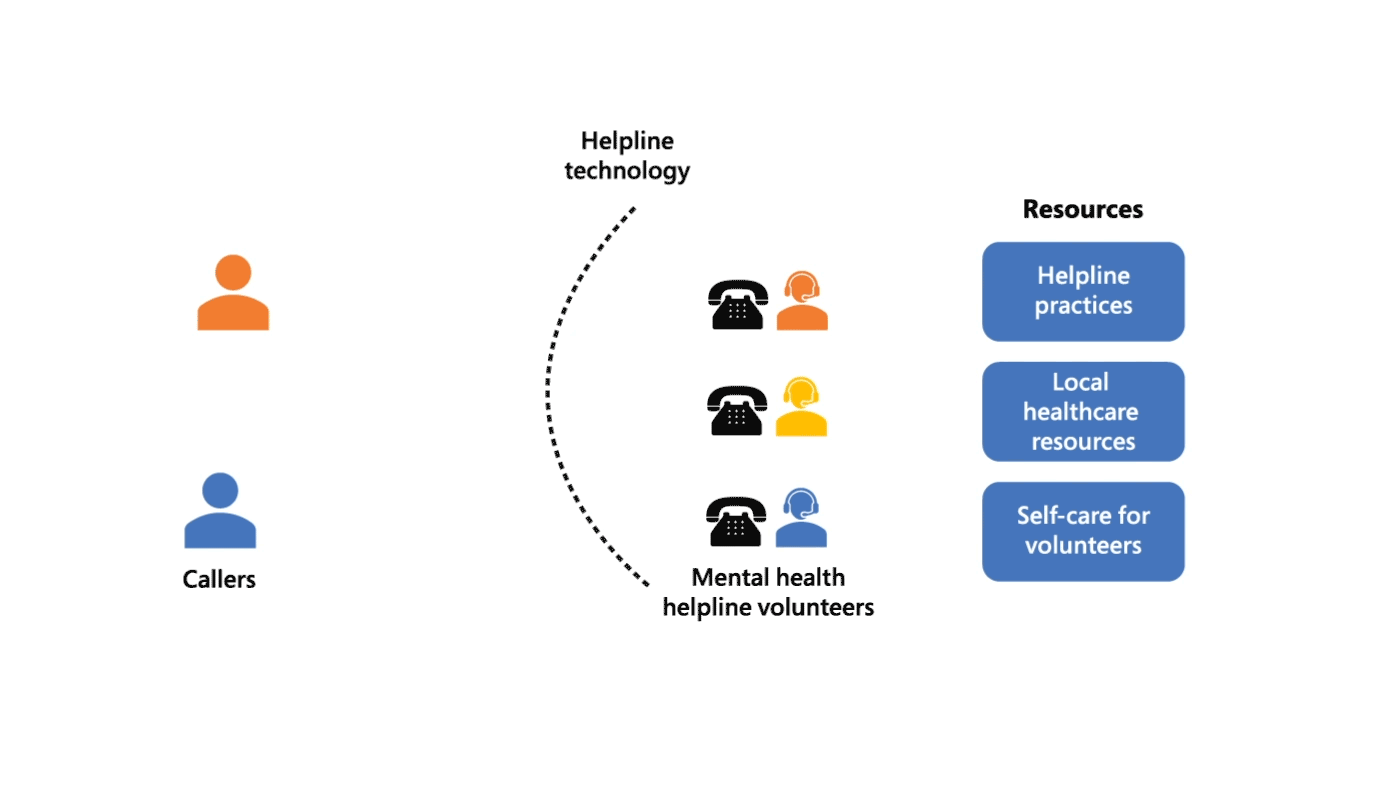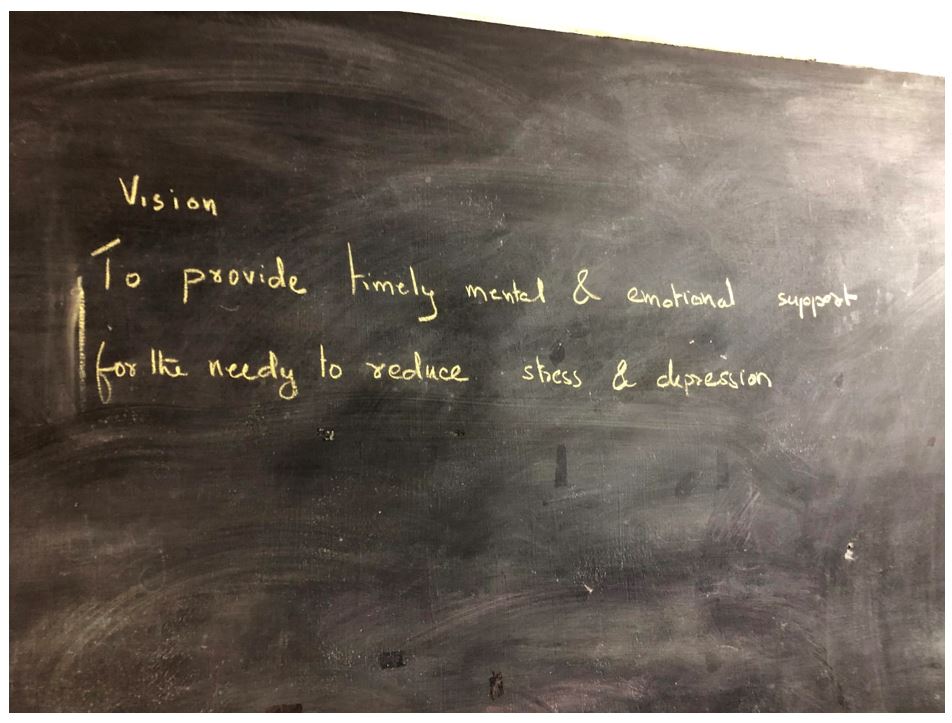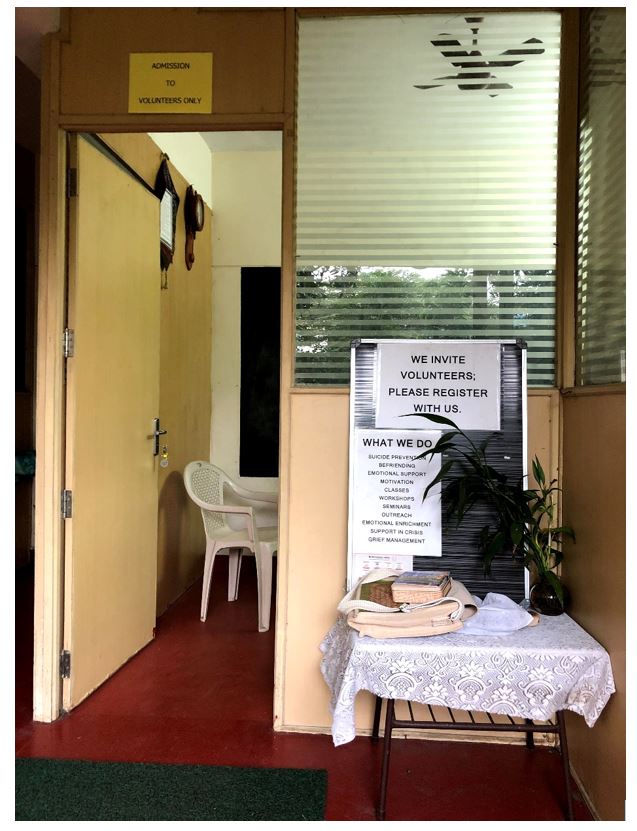This post has been republished via RSS; it originally appeared at: Microsoft Research.


Figure 1: The vision for one of the mental health helplines, as described in a large blackboard in their office: “To provide timely mental and emotional support for the needy to reduce stress and depression.”
When confronted with distress and uncertainty, people often turn to technology-mediated solutions to seek support. Many solutions are emerging based on phone apps or online communities, with phone helplines being one of the most accessible ways for people to connect with a counselor and get the assistance they need. There are over 25 volunteer-based mental health helplines in India. Despite this, there is currently no central helpline infrastructure. At certain times, it can be hard to connect to a counselor across these helplines, often due to multiple simultaneous calls and limited volunteer shifts.
So we asked the question: How can we enable mental health helplines to support more people and be more effective? Our work is detailed in a publication for the ACM CHI Conference on Human Factors in Computing Systems (CHI 2020), and is titled “‘Like Shock Absorbers’: Understanding the Human Infrastructures of Technology-Mediated Health Support Systems.” The paper is co-authored with Sachin Pendse, who was a Research Fellow at Microsoft Research India, as well as Munmun De Choudhury and Neha Kumar from Georgia Institute of Technology. For this research, we conducted in-depth interviews with volunteers who help to staff five different helplines in India, and we provide design suggestions for building technology solutions in this context based on the insights gleaned from volunteers.
Volunteer experiences reveal strengths of diversity and challenges to address
We found that helpline volunteers have a personally fulfilling yet challenging job. While talking to callers, they have to consistently negotiate several variables in their nature of support—from the helpline organization’s values to their own—as well as negotiating health boundaries between the work and their personal lives. The calls can vary widely, from relatively mild relationship distress to school problems and those of suicidal ideation.
Unlike helplines in the United States that mainly receive crisis calls, volunteers revealed that many people call repeatedly to talk about ongoing issues in their lives or to update the volunteer on progress they have made in working through personal issues. In many instances, volunteers reported that people were calling helplines in lieu of mental healthcare due to financial constraints or stigma, which underscores the healthcare access problem. In those cases, helpline volunteers acted as a first line of contact to the mental healthcare ecosystem and would often connect them to professionals or guide them to local resources.

Figure 2: A phone booth of a helpline in India where volunteers take calls from callers in need of help.
Specifically, we found that the languages that volunteers felt comfortable speaking, their past life experiences, and gender identity had an impact on who they could counsel and how this counseling took place. Given the many languages spoken in India, callers often expressed preference for a specific language that may not be spoken by the volunteer. Gender also played a role in the accessibility of a helpline, as many callers preferred to speak to someone with the same gender identity as them. Only some helplines were able to accommodate such requests, given the limited shift times for volunteers.
When the right match was made, volunteers noted that the formation of a deep and therapeutic relationship influenced by shared identity—one in which callers called repeatedly to update volunteers on their progress—was one element of their work that both callers and volunteers found impactful. In a way, diversity of volunteers’ experiences and identities served as an asset for a helpline.
Above all, our study revealed that the process of assisting another person experiencing mental health symptoms is a profoundly human endeavor. While technology enables a caller from anywhere in India to reach a helpline, it is the human connection with volunteers that provides a level of personalization and support that is crucial for managing mental health symptoms and conditions. Along these lines, it is crucial to think about the well-being of volunteers as well, given their regular exposure to acute mental symptoms. Volunteers noted that not knowing the welfare of people who called them when a call was suddenly cut was particularly difficult. Volunteers also spoke about the need for self-care and drawing boundaries for themselves so that they were less impacted by the experiences they were exposed to. Unfortunately, female volunteers reported instances of fielding calls that were meant to harass them. For each of these calls, due diligence meant that they had to go through a taxing process of discerning whether someone was genuinely seeking help.
How can technology help address the needs of volunteers?
Given the complexity of work, any effort to improve helpline-based support with technology must consider the needs of helpline volunteers and foster the human connections that anonymous helplines make possible. Based on the results of our study, matching the language and identity preferences for a caller is an important step. To do so effectively, it may be necessary to create a centralized pool of volunteers so that there is sufficient diversity available to address the needs of everyone who calls the helpline.
Unlike typical centralized helpline systems that route independently each time, however, it is important to give callers agency in choosing the helpline and person that they are connected to. This would better allow callers to have a sustained therapeutic relationship with a volunteer if they chose to do so. At the same time, it is important to develop systems that both help volunteers block malicious callers and let callers update their well-being through a simple, automated system over the phone. If possible, it may also be useful to route calls based on the type of need. For instance, many calls seek information and can be addressed by providing details regarding appropriate local resources.
Based on these findings, we are now working with Indian helplines to design and launch a centralized helpline number based on Interactive Voice Response (IVR) technology. With the centralized number, we aim to improve access to helplines when they are available and provide customized information for a caller when they are not. You can stay connected with this initiative via our project’s website. Beyond helplines, our team at Microsoft Research India is looking at online and app-based access points for mental health support, in collaboration with TalkLife and the National Institute of Mental Health and Neurosciences, India. The Moments of Change project page has more details.
The post Behind the phone: The importance of human connections in improving mental health helpline technology appeared first on Microsoft Research.
